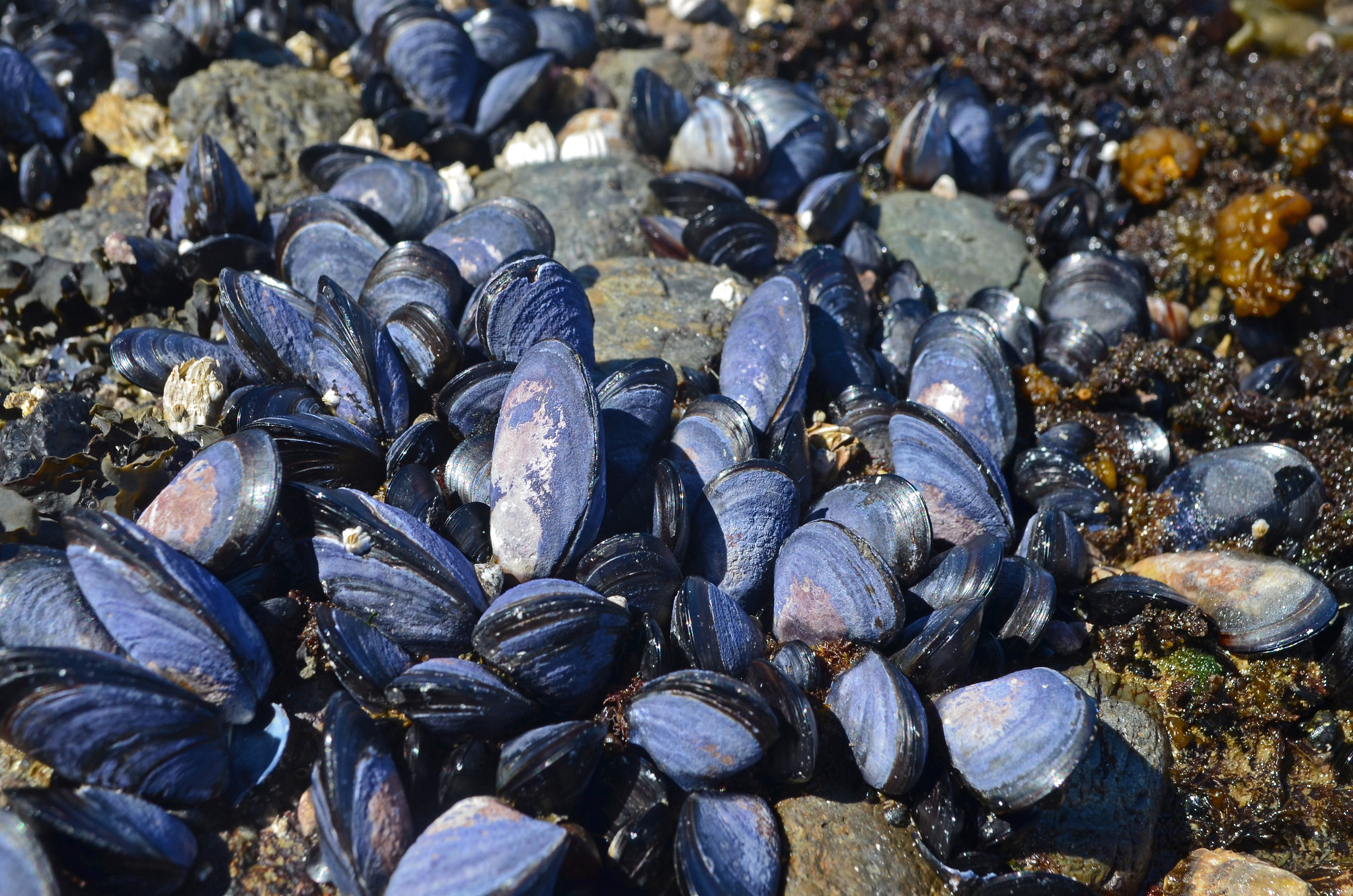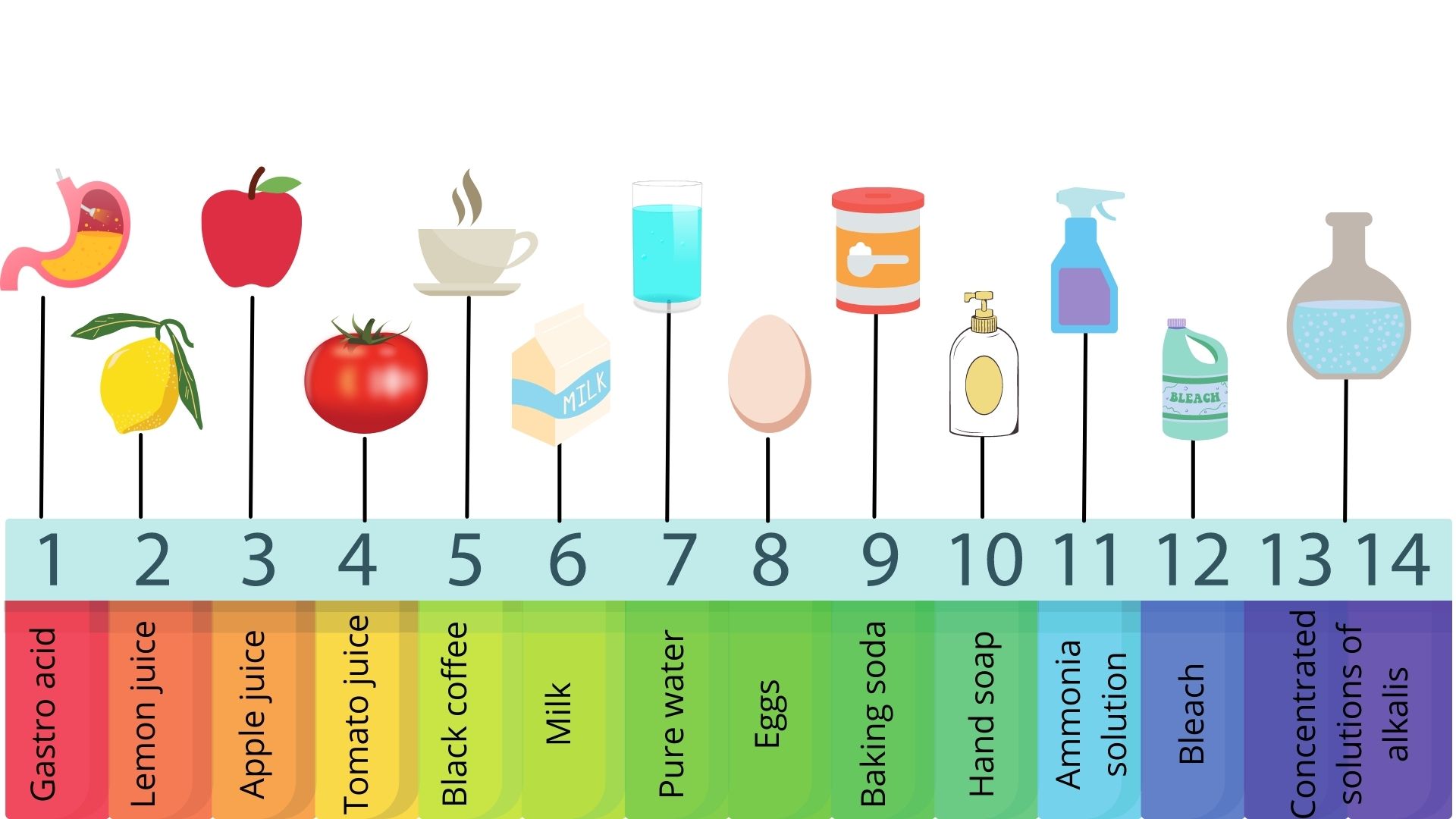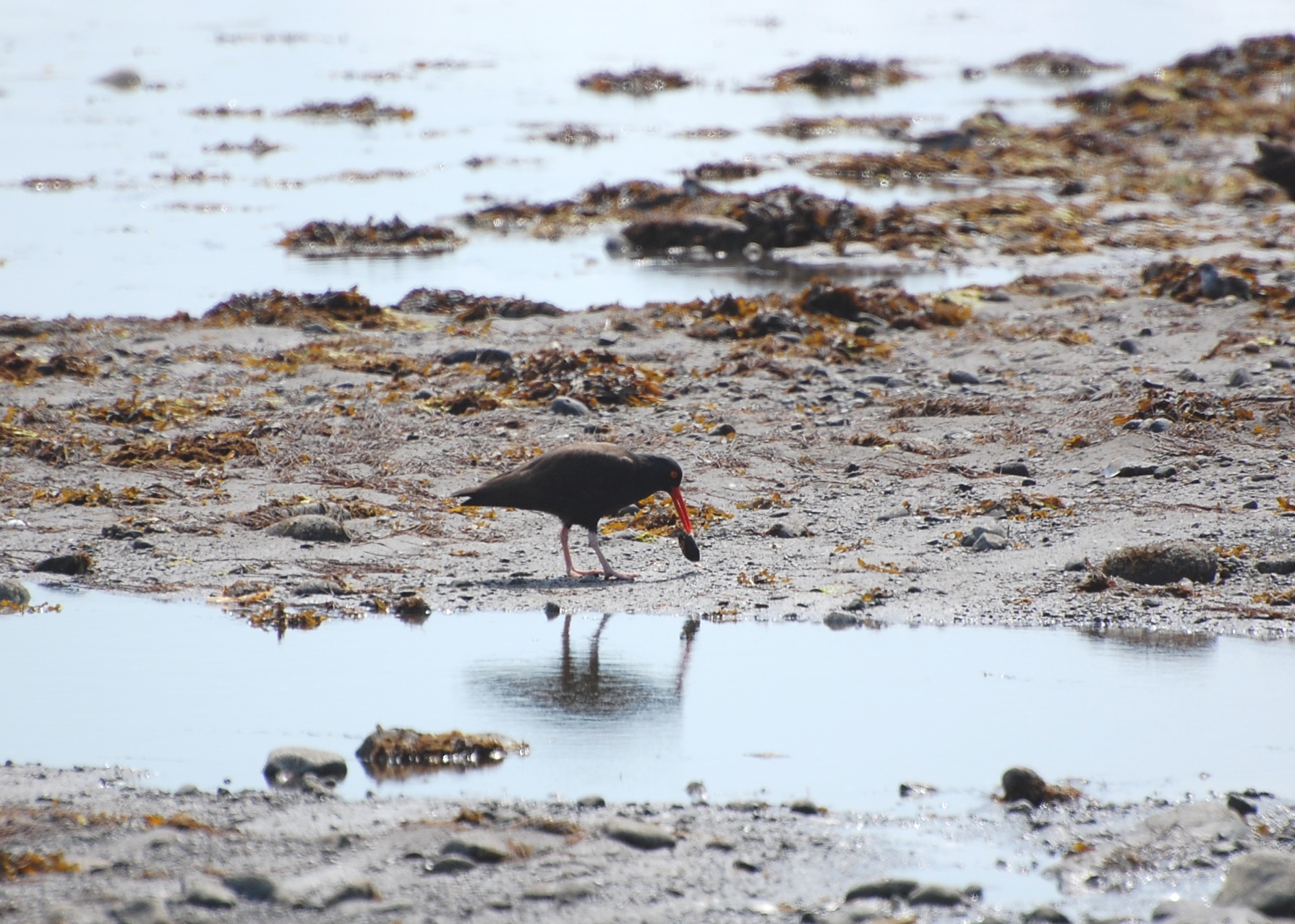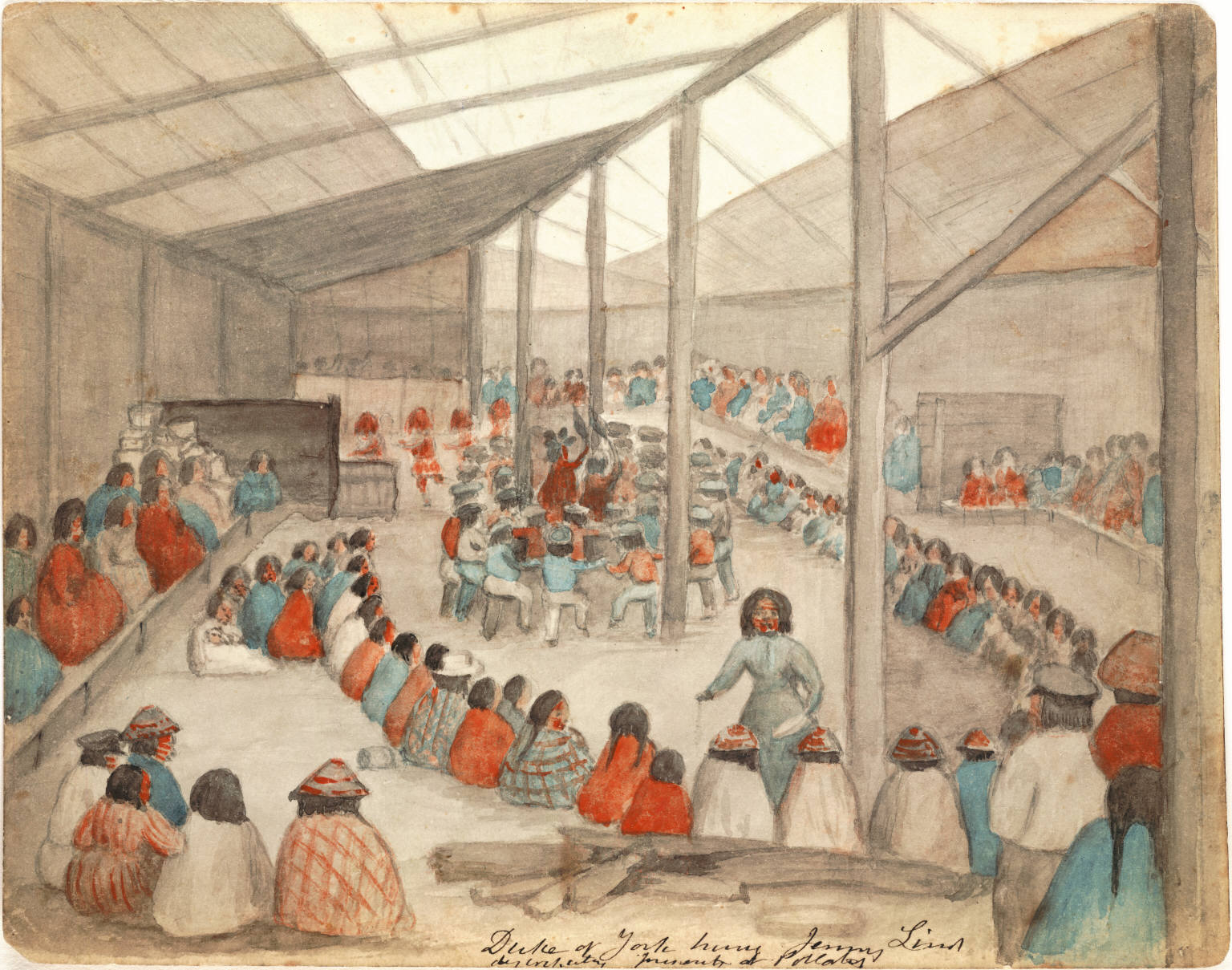 Mussels at San Juan Islands National Monument. Credit: Jennifer McNew, Bureau of Land Management
Mussels at San Juan Islands National Monument. Credit: Jennifer McNew, Bureau of Land Management
With over 7,000 miles of coast in Alaska, Oregon, and Washington, the Northwest is home to many types of bivalve shellfish and marine snails. These includes clams, oysters, mussels, scallops, limpets, sea snails, and abalone.
Bivalve shellfish bring in over $270 million to Oregon, Washington and Alaska each year, supporting thousands of jobs. Over 80 percent of marine aquaculture is from bivalve shellfish. The Salish Sea (which includes the Strait of Georgia, Desolation Sound, The Strait of Juan de Fuca, and Puget Sound) in Washington and British Columbia attracts hundreds of thousands of recreational shellfish harvesters every year. Shellfish are an important part of U.S. diets, providing valuable nutrients. These animals are also culturally important to several coastal tribes in the Northwest. Coastal tribes often trade or gift shellfish with tribes that do not have access to the ocean, extending the importance of this food source beyond the coast.
Shellfish also play a crucial role in building, maintaining, and feeding underwater ecosystems. As filter feeders, they improve water quality for other animals. Some are also considered ecosystem engineers and create habitat for other animals (such as habitat created by mussels and oysters). Many animals rely on shellfish and the animals that eat shellfish as well.
Climate Change and Shellfish
Climate change, caused by greenhouse gas emissions, is creating challenges for shellfish in the Northwest. Greenhouse gas emissions increase carbon dioxide in the atmosphere. As atmospheric carbon dioxide increases, more is absorbed by the ocean. This causes ocean acidification. In addition, atmospheric carbon dioxide causes temperatures to increase. Warmer water can harm shellfish that live in the tidal zone and cause increases in harmful algal blooms (HABs). Climate change is also altering precipitation patterns. This can cause shellfish die-offs by reducing the salt levels in enclosed bays (e.g., the Salish Sea). These impacts will affect both the shellfish and the many humans and animals that rely on them.
 A pH scale, where 1 represents most acidic and 14 represents most basic, credit: Aaron Middleton
A pH scale, where 1 represents most acidic and 14 represents most basic, credit: Aaron Middleton
Ocean acidification
About 30% of carbon dioxide released into the atmosphere gets absorbed by the ocean. When carbon dioxide mixes with sea water, a series of chemical reactions occur that makes the water more acidic (keep in mind that a lower pH means more acidic).
The ocean is already experiencing the effects of increased dissolved carbon dioxide. Since pre-industrial times, there has been a 26% increase in ocean acidity. By the end of the century, the oceans could become an additional 150% more acidic, depending on how much carbon dioxide humans emit. The water in the Northwest is considered “colder and fresher than the global average ocean” and therefore carbon dioxide dissolves more easily here than other parts of the world, making these waters more acidic naturally. The parts of this region with more freshwater input (e.g., Puget Sound) also have naturally lower pH. Therefore, ocean acidification will increase slightly faster in the Northwest compared to other parts of the world. Currently, the pH in the Northwest oceans ranges between 7.8-8.1, though values outside this range can occur.
In more acidic conditions a compound called calcium carbonate becomes less available. Many shellfish use calcium carbonate to create their shells. If there is less calcium carbonate available, shellfish cannot incorporate it into their shells, meaning slower growth and weaker or deformed shells. In the ocean, calcium carbonate can crystalize in a few forms, such as aragonite and calcite. Aragonite is more easily dissolved than calcite in acidic conditions. Therefore, shellfish that form shells with aragonite (i.e., sea snails) are potentially more threatened by ocean acidification than calcite-forming animals.
Some shellfish that live in more acidic water have a harder time reproducing. Others struggle with creating proteins or fatty acids, making them less nutritious. Ocean acidification can also cause them to grow slower, which can affect harvest weight. In the most extreme cases, increased ocean acidification can lead to death.
Ecosystem effects
Acidification will affect ocean food chains, which could have widespread impacts on ocean- and land-based ecosystems. For example, certain marine snails make up 60% of the diet of pink salmon. If these fish lose this valuable food source, it could have widespread repercussions, as salmon are an important food source for humans and both ocean- and land-based animals.
Shellfish are also important ecosystem engineers. For example, many shellfish, such as oysters and mussels, help build habitat by filtering water. When they filter water, more sunlight can get through, which allows for more eelgrass growth. This provides habitat for animals such as salmon and marine mammals. Decreased populations of these ecosystem engineers could decrease habitat for other marine life.
Not all the effects of ocean acidification on ecosystems are understood. For example, plankton (an important food source for many shellfish) respond to increased acidity in different ways. Some respond negatively. One analysis showed modern-day samples of a common plankton have a 76% thinner shells than samples taken between 1872 and 1876. Acidification can also reduce the ability of silica-forming plankton to form silica. But some plankton respond positively or neutrally. Certain plankton become better at photosynthesis in acidic conditions.
 A black oystercatcher in Alaska. Oystercatchers are one of the many animals that rely on shellfish for food. Credit: US Fish & Wildlife Service, Alaska Region
A black oystercatcher in Alaska. Oystercatchers are one of the many animals that rely on shellfish for food. Credit: US Fish & Wildlife Service, Alaska Region
The unequal impacts of ocean acidification will change population dynamics in the ocean. For example, ocean acidification will change the composition of plankton communities in the ocean. Certain types of plankton will thrive, and others will die off. Also, certain marine snails are more likely to be eaten by predators under acidic conditions. Not all animals eat all types of plankton (i.e., animals that eat diatoms are different than animals that eat algae) or marine snails. Some predators will be negatively affected if acidic conditions decrease the availability of the animals they rely on for food. This would create space for other animals to thrive. This change would ripple through the food chain, changing the composition of marine life. However, because of the complexity of marine ecosystems, it is difficult to predict how a more acidic ocean may affect ocean life.
Increased temperatures and extreme events
Shellfish face a two-fold threat with increasing temperatures. Because they often live in the tidal zone, where land and sea intersect, they will be affected by increases to both marine- and land-based temperatures. Heatwaves that occur on land can be uniquely threatening to bivalve shellfish. Shellfish cannot seek refuge in deeper, colder waters when temperatures increase because they cannot move. The 2021 Heat Dome killed billions of oysters, mussels, and clams. They were unable to escape the heat, and the hottest times of the day came when the tides were the lowest. Summertime low tides usually occur in the middle of the day in the Northwest, which can cause shellfish to overheat during heatwaves.
Warming ocean water will affect shellfish and people who eat them. Extreme heat events in the ocean will increase, especially if changes to the El Niño Southern Oscillation or the Pacific Decadal Oscillation lead to warmer ocean waters more frequently. One of the biggest threats with warming waters is more frequent harmful algal blooms (HABs). Shellfish are filter feeders, and as they feed, they concentrate the toxins they ingest from HABs in their meat. HABs can cause many different types of shellfish poisoning. Even when shellfish are cooked, they still contain these toxins, making them unsafe to eat in any form.
Warming waters also favor vibrio, a bacterium that can cause infections in people who cut themselves harvesting shellfish, and stomach upset in people who eat raw shellfish. Because vibrio is a bacterium and not a toxin, shellfish exposed to vibrio can be eaten if cooked.
HABs are occurring more frequently in waters that were historically too cold to support this growth. Recent years have seen an increase in the numbers of HABs in Alaska and other Arctic waters. If rainstorms intensify in the Northwest, more runoff could carry more nutrients into the ocean and increase HABs. Climate change is also making conditions more favorable for the types of algae that cause HABs and less favorable for other algae.
Other extreme events, such as atmospheric rivers, could be a threat to shellfish. Large precipitation events can cause a pulse of water coming from land into the ocean. This can lead to both a lower pH near rivers and lower salinity levels because freshwater is naturally lower in pH and salinity. In California, a series of atmospheric rivers in 2011 led to the death of many oysters in the San Francisco Bay when salt levels dropped. If these extreme rain events become more frequent in the future, places such as the Salish Sea could experience similar die-offs.
What impacts will these changes have on people?
Commercial fisheries
In the Northwest, Pacific oysters, geoducks, manila clams, and razor clams are commercially harvested. Although not native to the Northwest, Pacific oyster fisheries are some of the most economically important in the region. The Northwest is home to three large hatcheries that supply Pacific oyster larvae to the West Coast shellfish industry. The ability of these hatcheries to breed oysters affects the entire industry.
Ocean acidification has varying effects on oyster larvae and adults. The success of oyster larvae is dependent on the pH of the ocean. During early development, oyster larvae build their shell very quickly and rely on how much calcium carbonate is available in ocean water to use for shell building. As the ocean becomes more acidic, less calcium carbonate is available. This could make it hard for hatcheries in this region to supply oyster growers.
Nutritional value and safety
 Watercolor by James G. Swan showing the Klallam Townsend during a potlatch.
Watercolor by James G. Swan showing the Klallam Townsend during a potlatch.
Changes to the nutritional value and safety of shellfish will affect people who rely on these animals for food or income. As HABs become more common, it could become more challenging to reliably harvest shellfish. Changes to reproduction, harvest weight, and protein or fatty acid creation will affect commercial fisheries and the nutritional value of shellfish. If shellfish are not a reliable source of income or nutrition, people who are dependent on them may have to seek other ways to sustain themselves.
Tribal use of shellfish
Many tribal members harvest shellfish for subsistence foods. Changing conditions are impacting shellfish populations, adversely impacting tribal culture by reducing access to these foods. For example, certain beaches relied upon by Washington tribes for shellfish have been closed since 2020. Also, many Alaska Natives are remotely located, and the loss of this resource could be devastating to their communities.
Tribes rely economically on shellfish, and taxes from shellfish harvest are used to fund natural resource programs. In addition, they are a part of many cultural gatherings for tribes, such as potlatches.
What is being done to protect shellfish and the people who eat them?
Commercial oyster fisheries have found ways to ensure that they can continue to produce larvae. Hatcheries track the pH of water using tools that update ocean conditions at sites throughout the region in real-time (e.g., NANOOS). They can also look at forecasted acidification through LiveOcean. Using these tools, they can refill hatchery-tank water at times when water is less acidic. They can also add non-harmful additives to the water to increase its pH, such as soda ash.
Scientists have found some ways to reduce ocean acidity. Kelp and eelgrass absorb carbon dioxide during photosynthesis, which decreases acidity in nearby water. Encouraging or cultivating eelgrass and kelp near shore could benefit shellfish.
Scientists are also studying where shellfish survive during heatwaves. Using this information, coastal regions could build sea walls to protect shellfish populations. This information could also help to protect places that are refugia for these animals. This would ensure that shellfish could continue to reproduce naturally in this region.
For safety of shellfish consumption, health authorities keep up-to-date maps. Beaches are closed if shellfish have too much toxin in their meat. If a beach is labeled as “open for harvest,” shellfish harvested there are safe to eat. These maps exist for recreational and commercial harvesting in Washington state and recreational harvesting in Oregon. As of June 2023, there are currently no safe beaches for recreational harvest in Alaska. For commercial hatcheries, treatment systems help remove harmful algae and bacteria from their waters. Scientists are finding other filtering techniques to reduce the threat of toxins in hatcheries.
Additional resources
- Washington Ocean Acidification Center, University of Washington
- StoryMap by the Native Olympia Oyster Collaborative on all known Olympia oyster restoration projects
- National Oceanic and Atmospheric Administration Fact Sheet: Harmful Algal Bloom Impacts on Aquaculture
- Research by the National Oceanic and Atmospheric Administration and partners to predict and study harmful algal blooms (HABs) using eDNA

